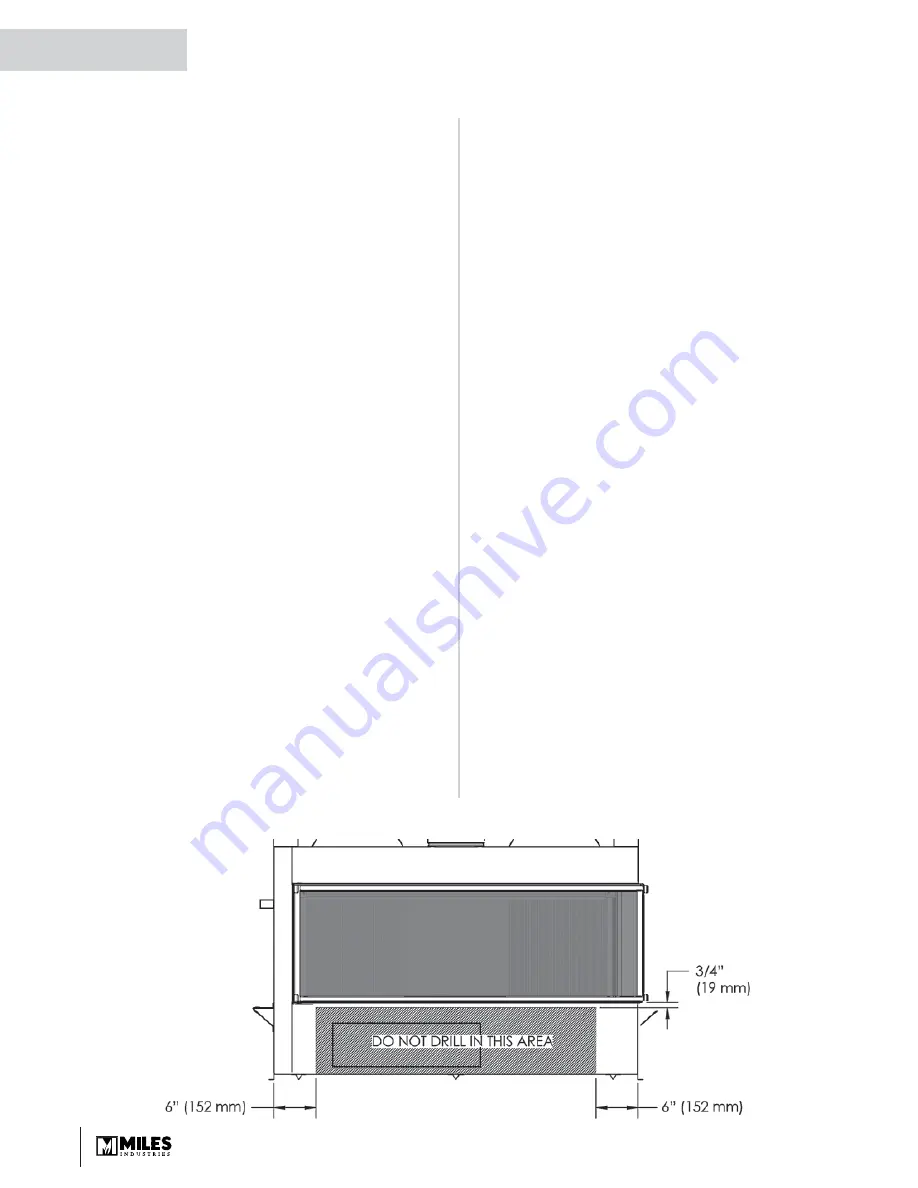
40
Applies to both LJ and RJ
corner appliances
Plan Wall Finish
Non-Combustible Materials Specifi cations
Material which will not ignite and burn. Such materials
are those consisting entirely of steel, iron, brick, tile,
concrete, slate, glass or plasters, or any combination
thereof.
Materials that are reported as passing ASTM E 136,
Standard Test Method for Behavior of Materials in a
Vertical Tube Furnace at 750 °C shall be considered
non-combustible materials.
Combustible Materials Specifi cations
Materials made of or surfaced with wood, compressed
paper, plant fi bers, plastics, or other material that
can ignite and burn, whether fl ame proofed or not,
or plastered or unplastered shall be considered
combustible materials.
Non-combustible cement board
The LX2 fi replace requires a 1/2” (13 mm) thick non-
combustible cement board to be used as a wall surface
immediately above the unit opening in the front and
above and behind the opening on each side.
Extending the cement board well beyond the minimum
will help avoid cracking due to diff erential expansion of
materials.
Pre-drill cement board with oversized holes and do
not over-tighten screws to avoid cracking due to heat
expansion.
Standard gypsum wall board may be used beyond the
perimeter of the cement board.
Non-combustible fi nishing over cement board
Additional non-combustible material such as tile, etc.,
may be applied over top of the cement board or you
may choose to leave it fi nished clean with no tile.
Cracking wall fi nishes
The LDK HeatShift Duct Kit reduces the wall tem-
peratures and minimizes the possibility of cracking
wall fi nishes.
If a clean fi nish with no tile, etc. is desired, joints in
the cement board and the transition to gypsum board
will require special attention if future cracking is to be
controlled. Be aware that temperatures on the non-
combustible wall surface above the appliance can
exceed 175°F.
Below are some tips on how to best avoid any
cracking:
• Allow materials to dry thoroughly before fi nishing
the wall. Cement board has the ability to absorb up
to 30 percent of its weight in water and may shrink
as much as 1/8” over a 48” length when drying from
a saturated condition. Running the fi replace before
fi nal fi nishing will help drive out moisture.
• Always pre-drill screw holes through cement board
and use screws with self-milling head.
• Always use tape over joints.
• Behind joints, double up studs or use studs “on the
fl at” to add extra support to the joint. Adhesive on
the backside of wall board behind any joints can
help control diff erential movement.
• Use multiple, thinner coats of joint compound and
allow to dry thoroughly between coats.
• Ensure framing materials are dry.
• After fi nishing the wall, introduce heat gradually to
slowly dry any excess moisture rather than drying
too fast.
• Avoid notching cement board or tiles around corners
of window opening and instead provide a joint that
intersects the corner.
INSTALLATION PLANNING
QUALIFIED
INSTALLER
















































